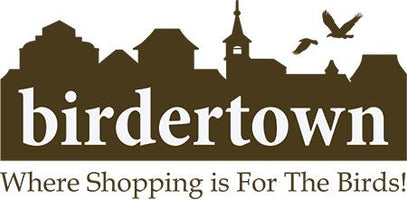
A Birdertown Guide to Attracting Blue Jays
If you are a baseball fan, you likely associate blue jays with the city of Toronto. However, these birds can be found throughout the United States east of the Rocky Mountains as well as many parts of Canada. These songbirds are known for being quite intelligent and are easily recognizable.
You’ll note a blue jay by its white face and chest along with a blue crest and wings as well as touches of black markings. It is a very distinctive bird that many birders call their favorite. They are particularly easy to identify because it is a species where male and female birds tend to look very similar. If you are hoping to see more of these stunning feathered friends, here are some tips for how to get them to frequent your yard.
Offer Them Enticing Foods
Blue jays have a fairly well-rounded diet. You can certainly attract them with items like sunflower seeds or suet cakes. However, an excellent way to attract blue jays is simply to offer some nuts. They love peanuts whether shelled or even whole. In fact, you may see them grab a few nuts and fly away to safety to dine.
Aside from nuts, corn kernels and cracked corn are popular items to offer. A particularly intriguing snack for any blue jay is mealworms. They will eat these delicacies either fresh or dried, giving you plenty of options to help lure these birds to your yard.

Help Them Build a House
We would love to tell you how to find the perfect birdhouse for a blue jay; however, the reality is they are very hard to lure into a house. They are cavity dwelling birds; however, they tend to like large cavities as opposed to birds like purple martins that do well with houses that have smaller cavities.
However, blue jays will find cavities in trees to build their nests. Trees that produce nuts like oak and beech are great options for your backyard as these can provide both shelter and food for blue jays. Be sure that you provide nesting material to help encourage these birds to build their nests in trees near your home. Things ranging from small sticks and twigs to grass clippings are great for encouraging this.
Choose the Best Blue Jay Friendly Water Feature
All birds need water in some form. For many, water is much more than just a necessary way to quench their thirst but also bathe in bird baths. While having any bird bath is better than having none, there are a few things that you can consider if you want to increase the odds that these colorful birds will choose your water feature.
First, blue jays tend to be attracted to water that makes splashing or dripping noises. Finding a bird bath with a bubbler or other sort on automation is a great idea! For people in colder climates, a heated bird bath is a great choice as this ensures that your feathered visitors will be able to have fresh water all year long. Additionally, opt for bird baths that are wide and a bit deep as blue jays are larger birds that value the space.
Attract Blue Jays with Large, Stable Feeders
When it comes to feeder type, there are a few options that are better than other for blue jays. Since these are larger birds, they like to have a bit more space. They also may become uncomfortable if a feeder swings or sways too much.
Platform feeders are a great choice because they provide space and are often more stable. Ones that attach to poles may be slightly preferred over those that hang. Hopper feeders are another great option for jays as they tend to provide more room for the birds to perch and munch down on delicious treats.

Keep Birdertown in Mind for Blue Jays and Beyond!
Whether you are a blue jay lover or want to find the right supplies for other types of birds, we pride ourselves in having the most complete selection of any bird-related site. Visit us for all of your birding needs and keep following our blog for tips and tricks to make your backyard a desired destination for all kinds of feathered friends.
